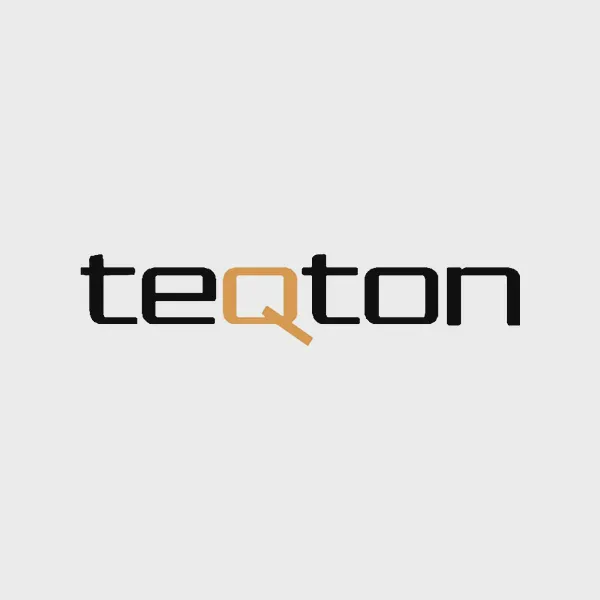Teqton floors and their EPD coverage, at a glance
Teqton builds joint‑free industrial concrete floors that need to win specs on performance and paperwork. Here’s a quick read on what they sell, how many product families they cover, and where today’s EPD footprint helps or holds them back.


Teqton in one page
Teqton specializes in joint‑free roller‑compacted concrete floors for warehouses, logistics and production spaces. Their flagship is a layered system: Teqbase as the engineered subfloor and Teqplan as the polymer‑reinforced wear layer, with optional grinding, polishing and epoxy surface treatments (Teqton site, 2025).
Product range and rough SKU count
This is a focused portfolio rather than a sprawling catalog. Two core system layers plus finishing options make up the offer. Counting thicknesses, mix designs and surface treatments, the total sits in the tens rather than hundreds of SKUs (Teqton site, 2025).
What EPDs exist today
Teqton has a published EPD covering its system floor. EPD International lists a 2024 update valid until Nov 1, 2029 for Teqplan, Teqbase and Teqplan System Floor, under EN 15804 scope Europe (EPD International, 2024). Building Transparency’s EC3 currently indexes one Teqton system‑floor EPD with validity through Dec 19, 2026, which may reflect normal operator‑to‑database sync timing. We reference EC3 once here for context.
Where coverage is strong
A system‑level EPD is valuable for early design decisions and for owners who evaluate the floor as an integrated assembly. It gives specifiers a single verified document to reference when carbon accounting a large slab area (EPD International, 2024).
Likely EPD gaps worth closing
We did not find separate, product‑specific EPDs for Teqton‑branded epoxy topcoats or polishing treatments in public operator libraries as of Nov 20, 2025. Many projects score LEED MR credits by counting product‑specific Type III EPDs from multiple manufacturers, and resinous flooring commonly contributes here (USGBC Credit Library, 2024). If surface treatments are part of the delivered scope, missing EPDs can force teams to substitute with pessimistic defaults that penalize the spec.
You can point readers to Teqton’s own EPD and LCA portal, which confirms they provide EPDs for deliveries and links out to their official listing (Teqton EPD page, 2025).
Competitive set you’ll meet on projects
Direct system competitors include PrīmX by Primekss, which holds EPDs for steel‑fiber reinforced jointless slab systems valid into 2027 for global and US scopes (EPD International, 2022). In finish‑driven spaces, resin flooring suppliers like Sika and Mapei publish numerous EPDs for self‑levelers, screeds and resin floors that often satisfy LEED MR BPDO counts (Sika EPD library, 2025; EPD International Sikafloor 100 Level, 2024). On jobs where the spec calls out ESD control, chemical resistance or cleanability, these resin systems can be proposed as alternates.
A fast playbook to raise specability
Think of the PCR as the Monopoly rulebook. Pick the one competitors already use so reviewers can compare apples to apples. For Teqton, that means:
- Extend beyond the system EPD. Add product‑specific Type III EPDs for epoxy topcoats most often paired with Teqplan in distribution, food and pharma projects. Those count at full value in LEED MR credits when third‑party verified (USGBC Credit Library, 2024).
- Segment by thickness and reinforcement. Publish variants for common slab thicknesses and reinforcement options so estimators don’t need to interpolate.
- Keep the data year tight. Use a clean reference year and lock utility, mix and yield data early so LCA modeling doesn’t slip the schedule. Great partners will handle the heavy data wrangling with minimal asks on plant and field teams.
- Publish where your buyers look. EPD International is already in play for Teqton. For North America, mirroring with a US‑favored operator can reduce friction with reviewers. The program operator is less important than speed, clarity and completeness.
Commercial impact in one minute
EPDs are a spec enabler, not just a PDF. LEED v4 and v4.1 award points for EPD‑covered products, and warehouse projects can meet thresholds with fewer product types than offices, which makes each documented product more valuable on a bid (USGBC, 2024). When an otherwise qualified floor lacks a product‑specific EPD, teams often recieve a modeling penalty that pushes them toward an EPD‑backed alternate.
Bottom line for Teqton
Teqton is a specialist with a crisp offer and at least one strong, current system EPD in the market today. To win more head‑to‑head specs against jointless slabs and resin systems, expand EPD coverage to the finishing layer set and the most common thickness variants. That’s a short, focused lift with outsized ROI, especially in logistics and manufacturing where a single facility can represent thousands of square meters.
Frequently Asked Questions
Does Teqton currently have a published EPD for its system floor and when does it expire?
Yes. EPD International lists an updated Teqton EPD covering Teqplan, Teqbase and the Teqplan System Floor, published Nov 1, 2024 and valid to Nov 1, 2029 (EPD International, 2024). EC3 still shows a system EPD with validity to Dec 19, 2026, likely reflecting database timing.
How broad is Teqton’s product range and how many SKUs do they likely have?
Two core layers (Teqbase and Teqplan) plus finishing options like grinding, polishing and epoxy. Counting thickness and finish variants, the total is in the tens, not hundreds (Teqton site, 2025).
Which competitors most often appear on the same projects with EPDs already in place?
Primekss for jointless slab systems with valid EPDs to 2027, and resin flooring suppliers such as Sika and Mapei that publish EPDs for self‑levelers, screeds and coatings used in industrial and clean area applications (EPD International, 2022; Sika, 2025).
Why do separate EPDs for epoxy finishes matter if the slab system already has one?
LEED MR credits reward product‑specific Type III EPDs. If the delivered scope includes an epoxy surface and it lacks its own EPD, teams may apply conservative defaults that hurt the carbon model and the spec. Publishing EPDs for common finishes removes that penalty (USGBC Credit Library, 2024).
